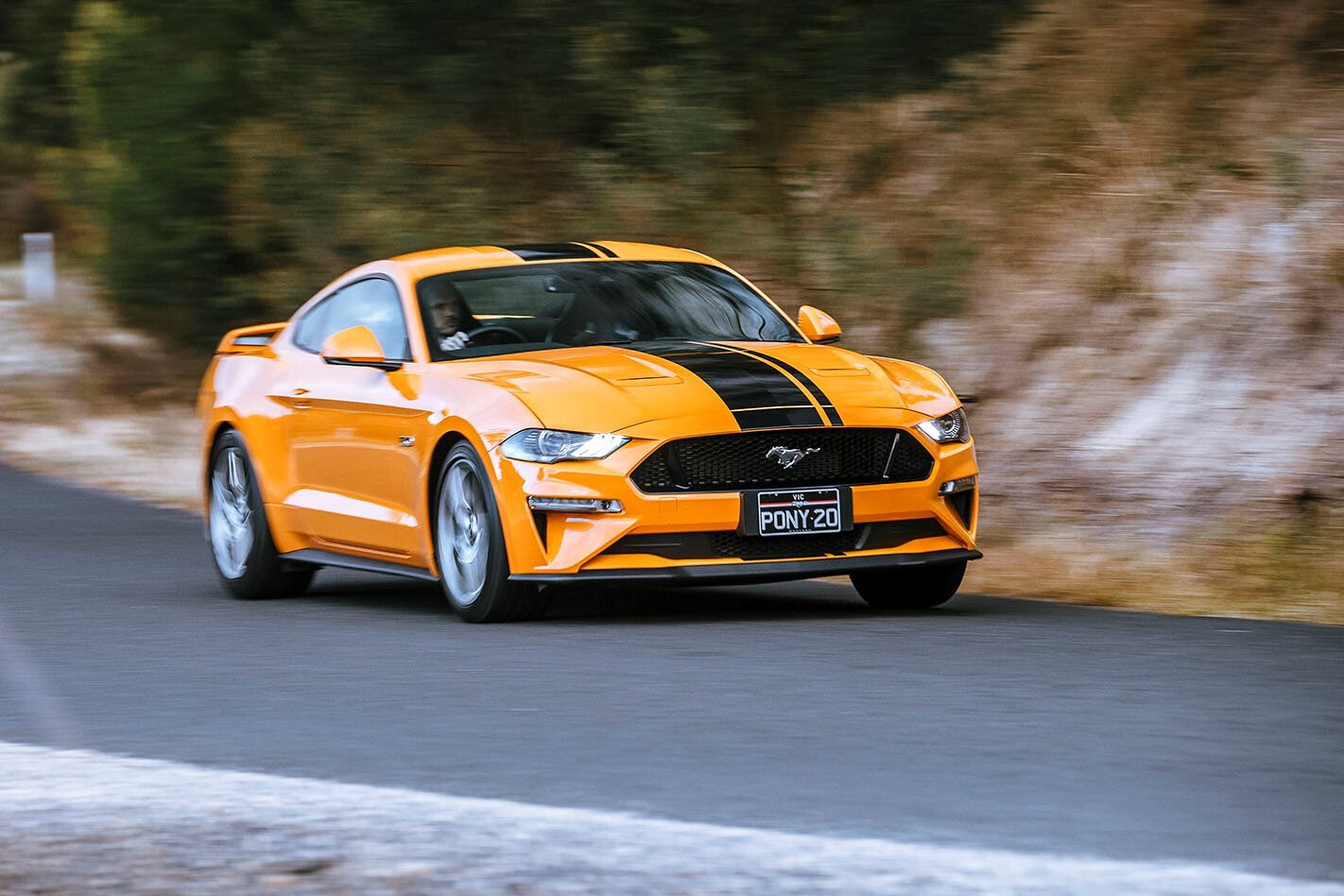
Even in its wildest dreams, Ford Australia surely couldn’t have foreseen just how wildly successful – and important – the Mustang would become to the company. Launched in late 2015, the car is now the second-best selling model in the entire Ford stable, behind the Ranger ute.
That’s not normal for a two-door sports car; sales usually fall off a cliff after a year or so. Judging by this mid-life update, though, the hot sales streak may continue for some time yet. We grabbed a top-spec V8-powered Mustang GT – with a six-speed manual – to see what changes have been wrought, and how effective they are.
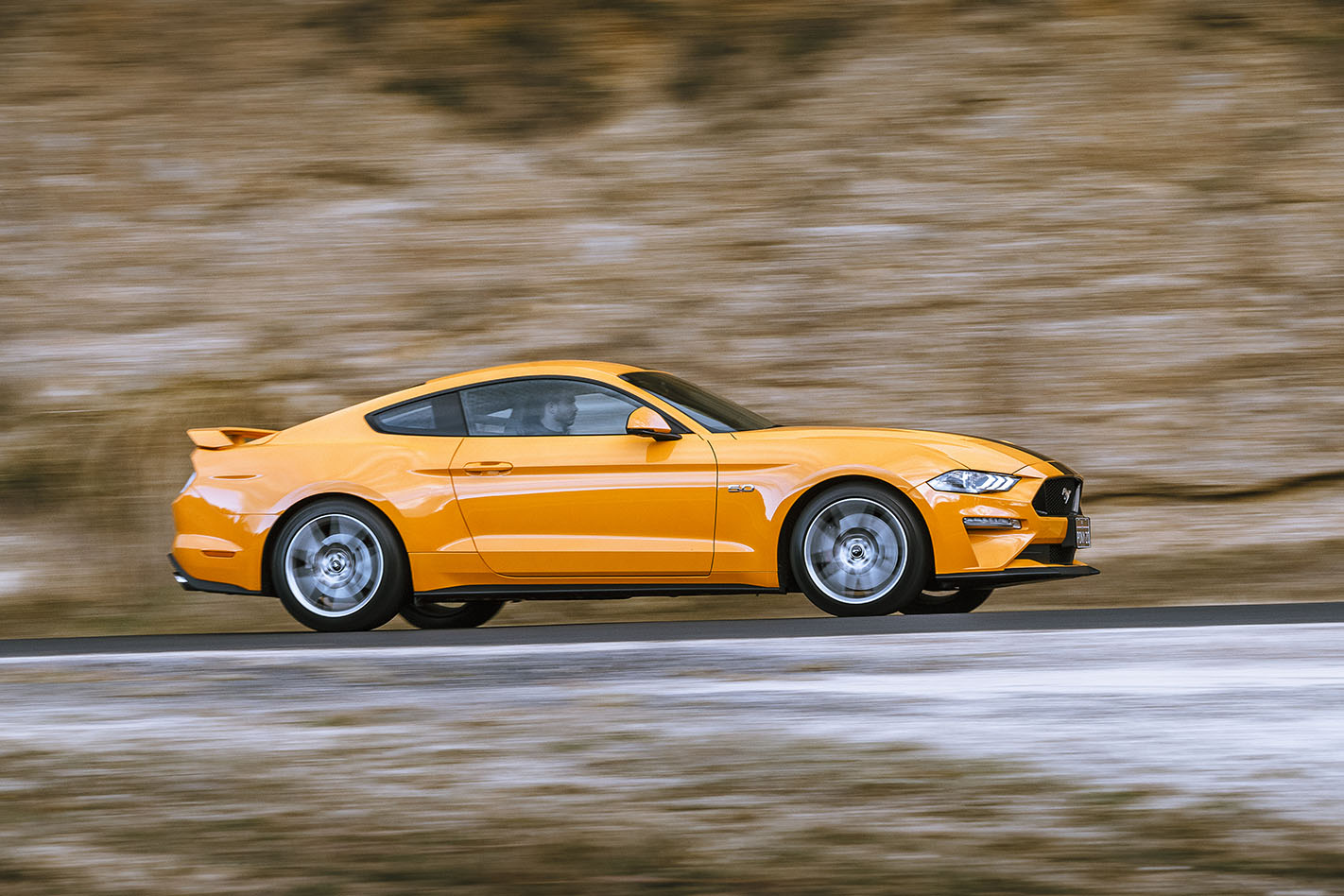
VALUE
The manual version of the rear-wheel-drive Mustang GT kicks off at $62,990, a $5500 rise over last year’s car. You’re getting more mumbo for your moolah, though, with the Coyote 5.0-litre V8 engine yielding more power (399kW, up 33kW) and torque (556Nm, up 26Nm) thanks to some fuel injection tweaks and a 500rpm higher rev limit at 7500rpm.
The six-speed manual’s been tweaked, too, and there’s a dual mode exhaust that goes from delightfully loud to wet-yourself louder with a change of driving modes.
The interior gets a digital dashboard and nicer interior materials, while the exterior. scores a few blink-and-you’ll-miss-them style updates, notably to the taillights.
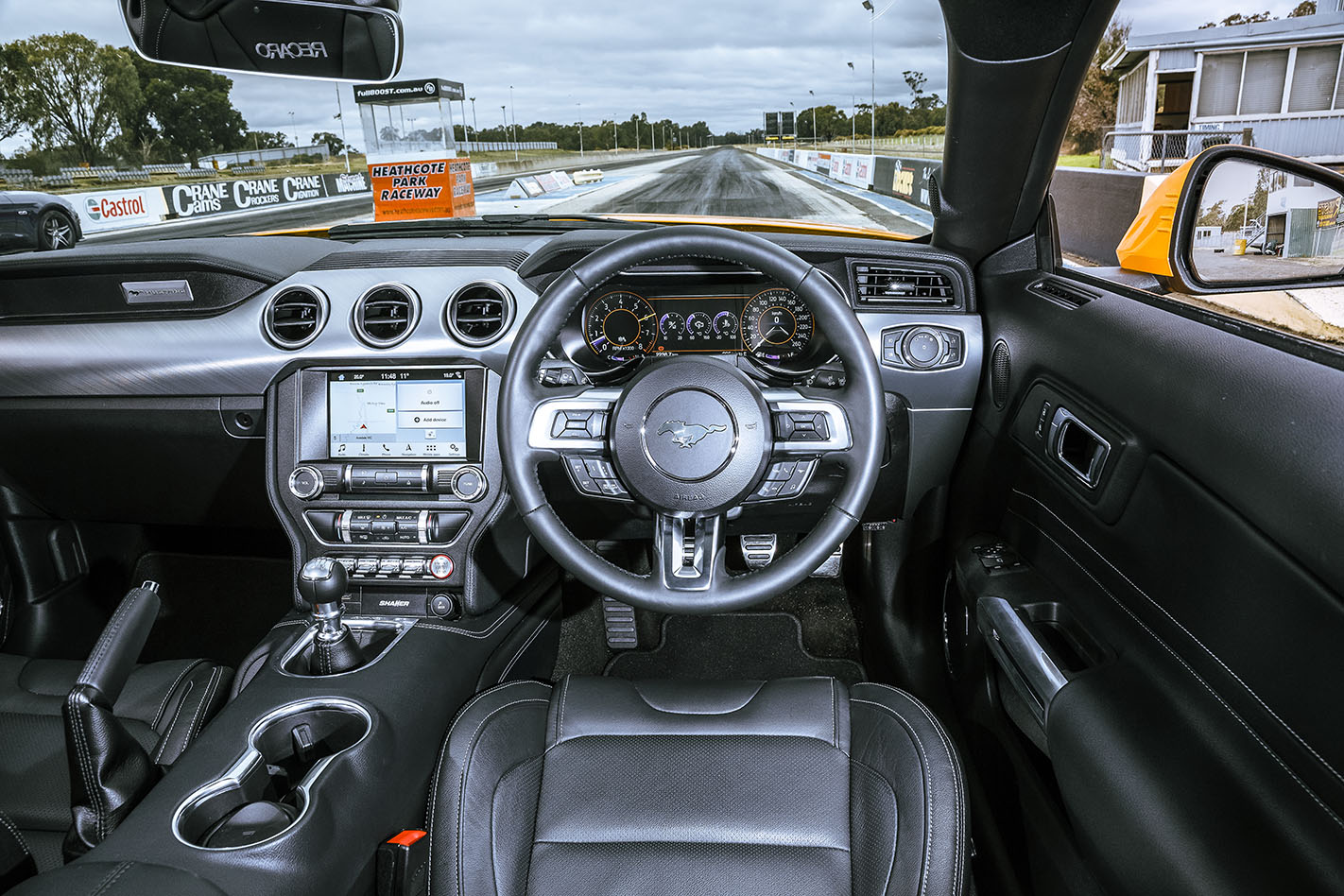
The Mustang essentially competes in a class of one, though the HSV Camaro might beg to differ. However, at a not-inconsiderable $23,000 uptick over the Mustang, the Camaro has its work cut out for it.
Our tester wore Orange Fury paint ($550), stripes ($650), forged rims ($2500), adaptive shocks ($2750) and slightly too narrow Recaro sports buckets ($3000), taking it to the total to $74,990.
Over a very brief (but very entertaining!) test run, the Mustang GT returned a pretty terrible 18.2L/100km measured on the dash, against a claimed combined fuel economy average of 13.0L/100km. Don’t buy a Mustang GT if you’re worried about fuel economy. Just don’t.
STANDARD FEATURES
The Mustang does pretty well in the standard equipment stakes, with auto headlights and wipers, LED lighting, a four-mode digital dashboard, Ford’s Sync3 multimedia system with Apple CarPlay, Android Auto and sat nav, leather-bound steering wheel and manual shifter, performance gauges and lap timers amongst its multimedia systems and a pretty decent stereo set-up.
Mechanically, there’s a set of six-piston Brembo brakes up front and a limited-slip diff down the back. Wheels are staggered (different width front to rear), with 19 x 9-inch rims forward and 9.5-inch wide rims aft, and are fitted with excellent Michelin Sport Cup 4 tyres.
With the demise of cars like the Holden Commodore SS V, the Mustang’s specs versus its performance are top of the class.
SIZE
Internally, the Mustang is pretty compact, and ideally suited to a couple, rather than a family. The low roofline and ground-scraping ride height means it’s an effort to lever yourself in if you’re tall, but once on board, there’s enough room for the driver to get comfortable.
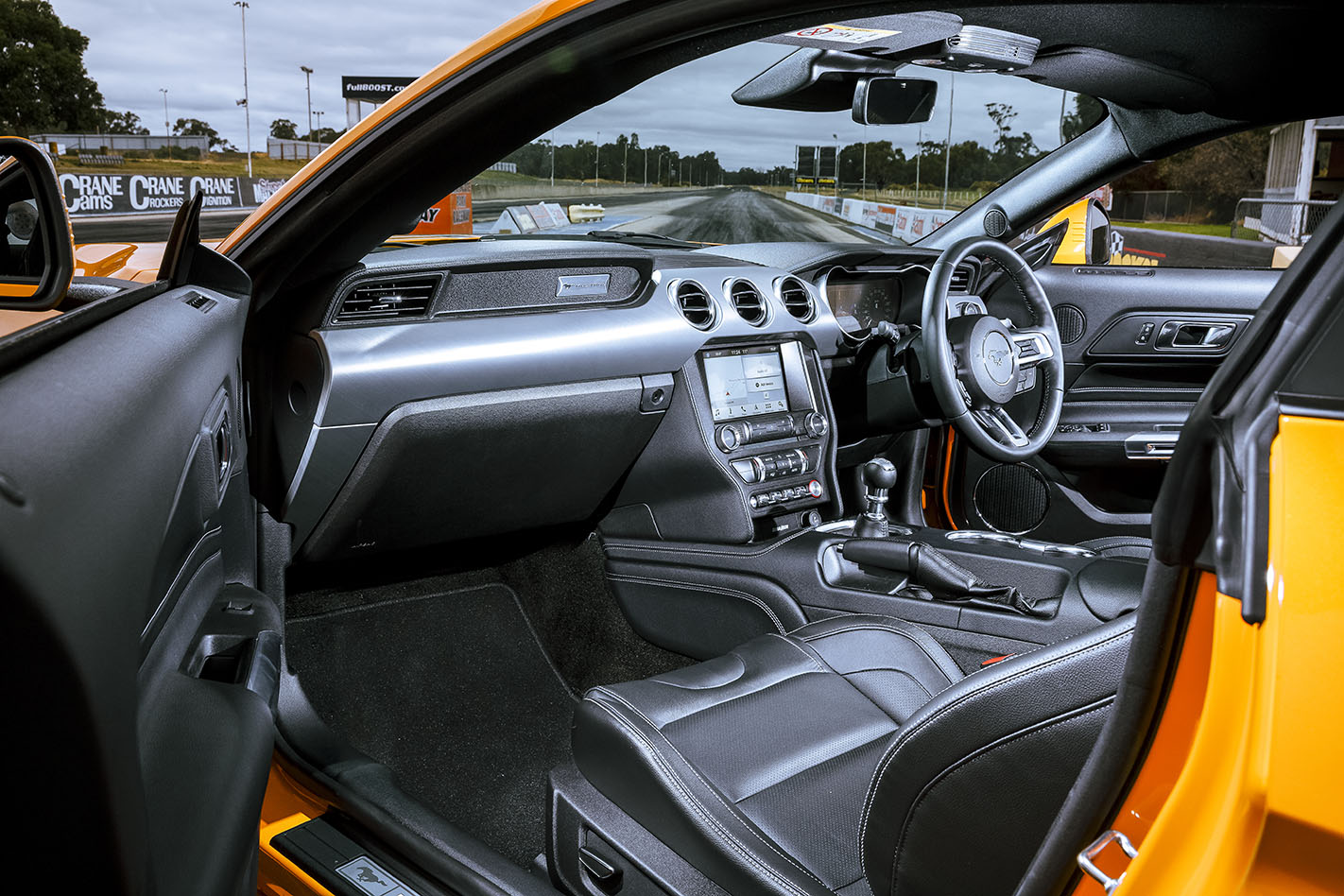
The rear ‘seats’ aren’t worth the effort to access; with masses of bolstering and a huge transmission tunnel, the back seat is a place for stuff, not people.
Even though the boot space of 408 litres is pretty tight, Ford insists you can fit two sets of golf clubs in there. As I don’t – and probably never will – play golf, I’ll take their word for it, though the small opening will surely mean some wriggling will be required.
SAFETY
The Mustang, sadly, hasn’t covered itself in glory here. Despite the presence of adaptive cruise control, AEB, lane departure and rear cross traffic warning systems, a poor NCAP score for its safety cell crash worthiness drags the Mustang down to three stars. It’s a fundamental engineering issue, and it’s a genuine concern should you need to carry little humans in the back seat.
The 2018 version now rates three out of five on the ANCAP scale, up from two – but it’s the only passenger car on the market currently with a score this low.
COMFORT
GT stands for Grand Tourer, and as such, the Mustang needs to be built for long days in the saddle? To this end, it does a very good job, though I’d recommend trying the optional Recaro sports seat before you buy. They are supportive, sure, but they are also very narrow in base width, which – oddly, given its ‘Murican origins – doesn’t suit larger folks.
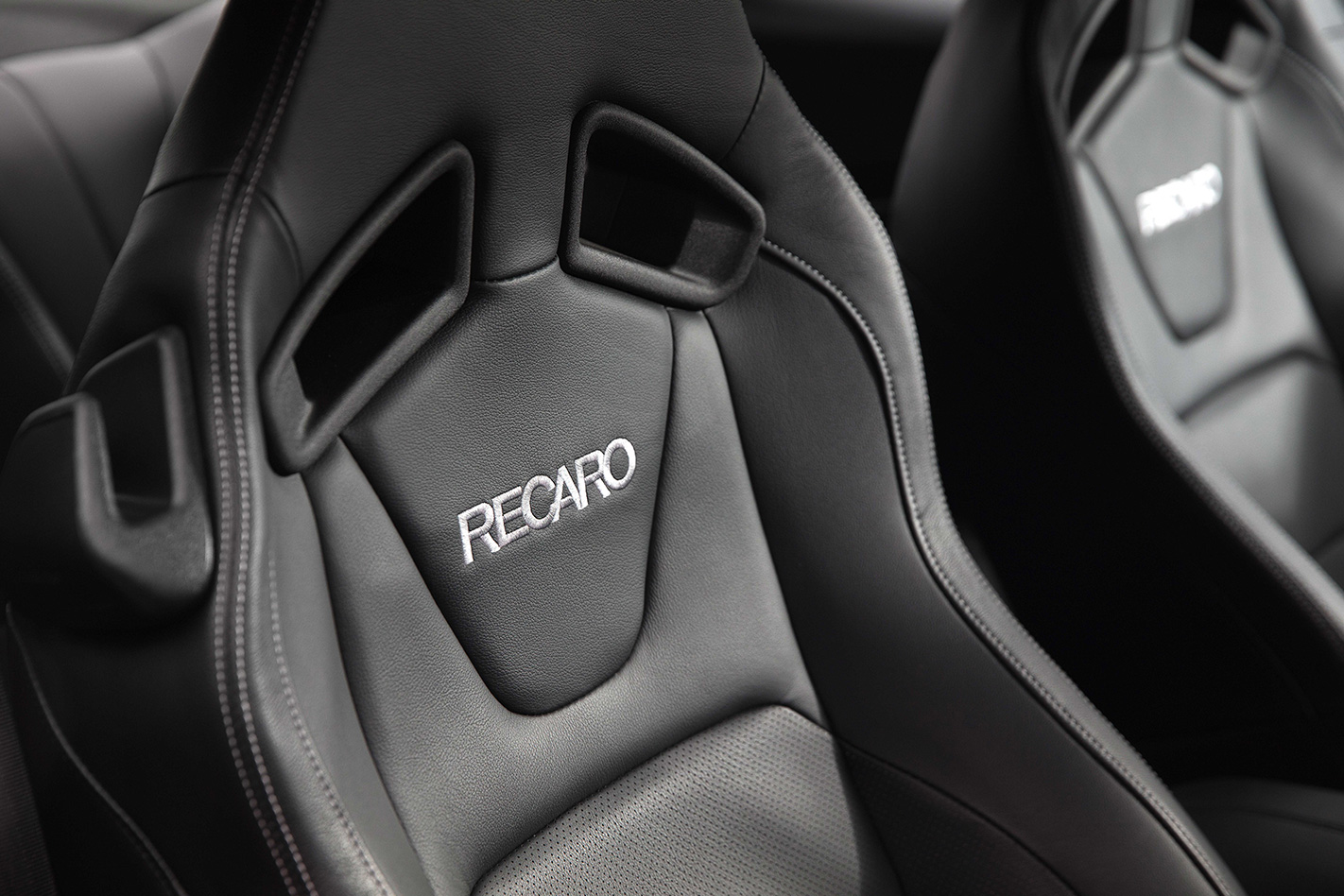
There’s sufficient headroom – just – and forward visibility is great. It’s compromised over your shoulder, though.
I’ve talked about the rear seats, and the less said about their lack of usefulness, the better.
ON THE ROAD
It’s out on the road where a distinct change in the Mustang’s demeanour can be detected, especially if you’ve opted for the adaptive dampers. These can be switched from firm to hard, and there’s a good, wide gap between the extremes. In the softest mode, the big ’Stang is docile, compliant and sophisticated, dealing with broken urban roads at commuting speeds with aplomb.
That same setting also gives the Mustang a much more confidence-inspiring sense of grip and surety in less than ideal conditions. There’s just more feel and feedback through both ends of the car, which in part can also be attributed to the Michelin tyre set.

If you have a bit of open road to play with, slotting the six-speeder into third and letting her rip is an absolute joy. The Coyote V8 is strong, linear and up for a fang, though the long gear ratios and tall final drive means you’re spending most of your time in the first four gears unless you’re out in the country.
And that exhaust… oh dear Lordy me, that exhaust. Inside the cabin, it’s like a quartet of Supercar tenors warming up for a concert, and it adds a cherry on top of the Mustang’s tilt at nostalgia. It sounds like a PROPER old-school V8, and that’s an awesome thing.
Only a couple of complaints from me; even though I like a high, firm brake pedal, the modulation of the middle pedal is tough to manage, and there’s a huge gap between it and the accelerator, making heel-and-toe shifting a difficult task.
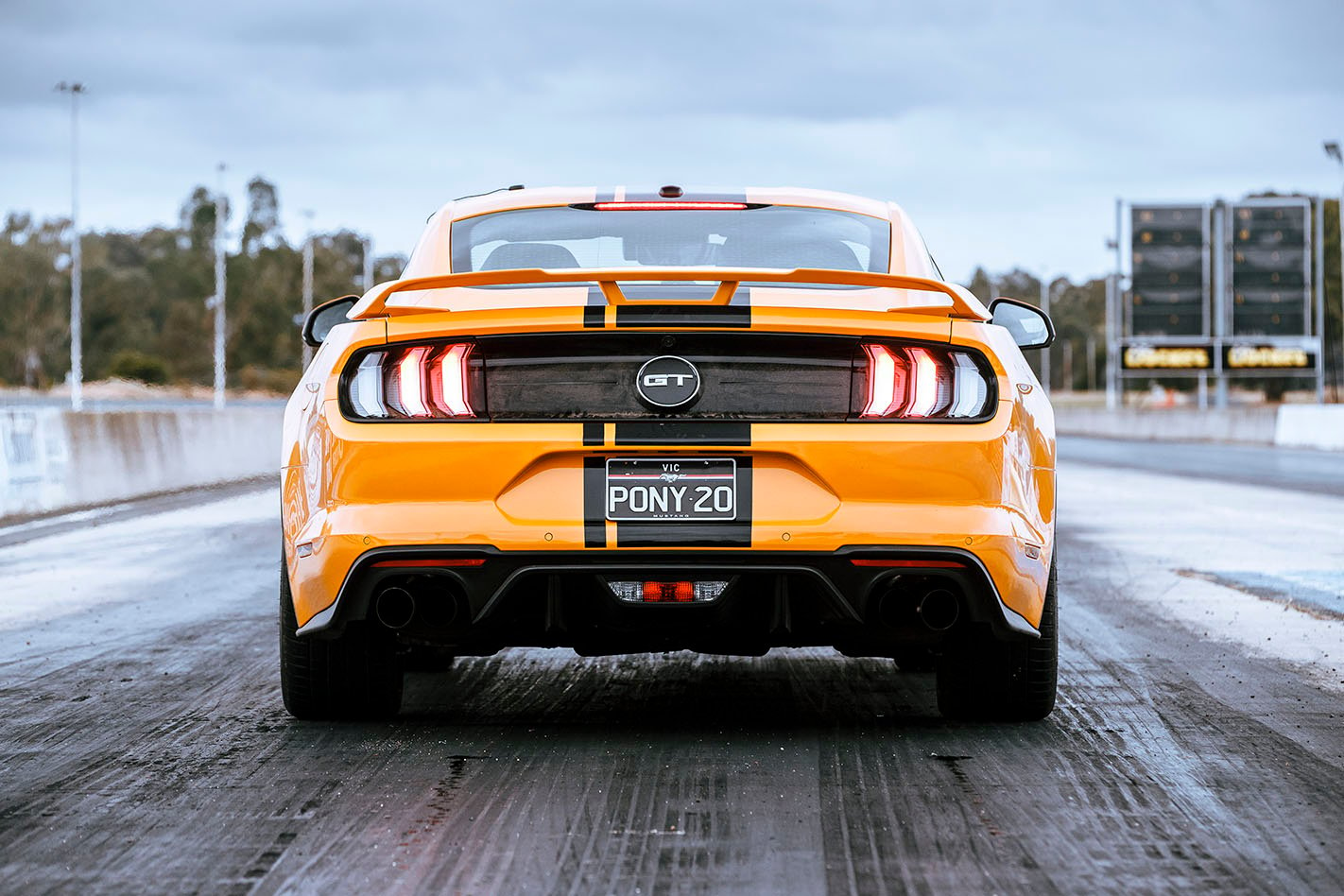
As well, I’m not enamoured with the digital dash. It feels a bit out of place in this rolling nostalgia factory, and I found it a bit fiddly to operate.
VERDICT
Ford dropped the Mustang into the Aussie market at a Goldilocks moment; local rear-drive V8s were all but gone, buyers were looking to fulfil a lifelong dream of owning a Mustang and the car itself was pretty good.
Well, it’s now gone from a good to a great on-road performer, with a greater focus on tighter build tolerances, decent specs and lashings of personality. For the money, too, it’s a highly specced and pretty powerful proposition.
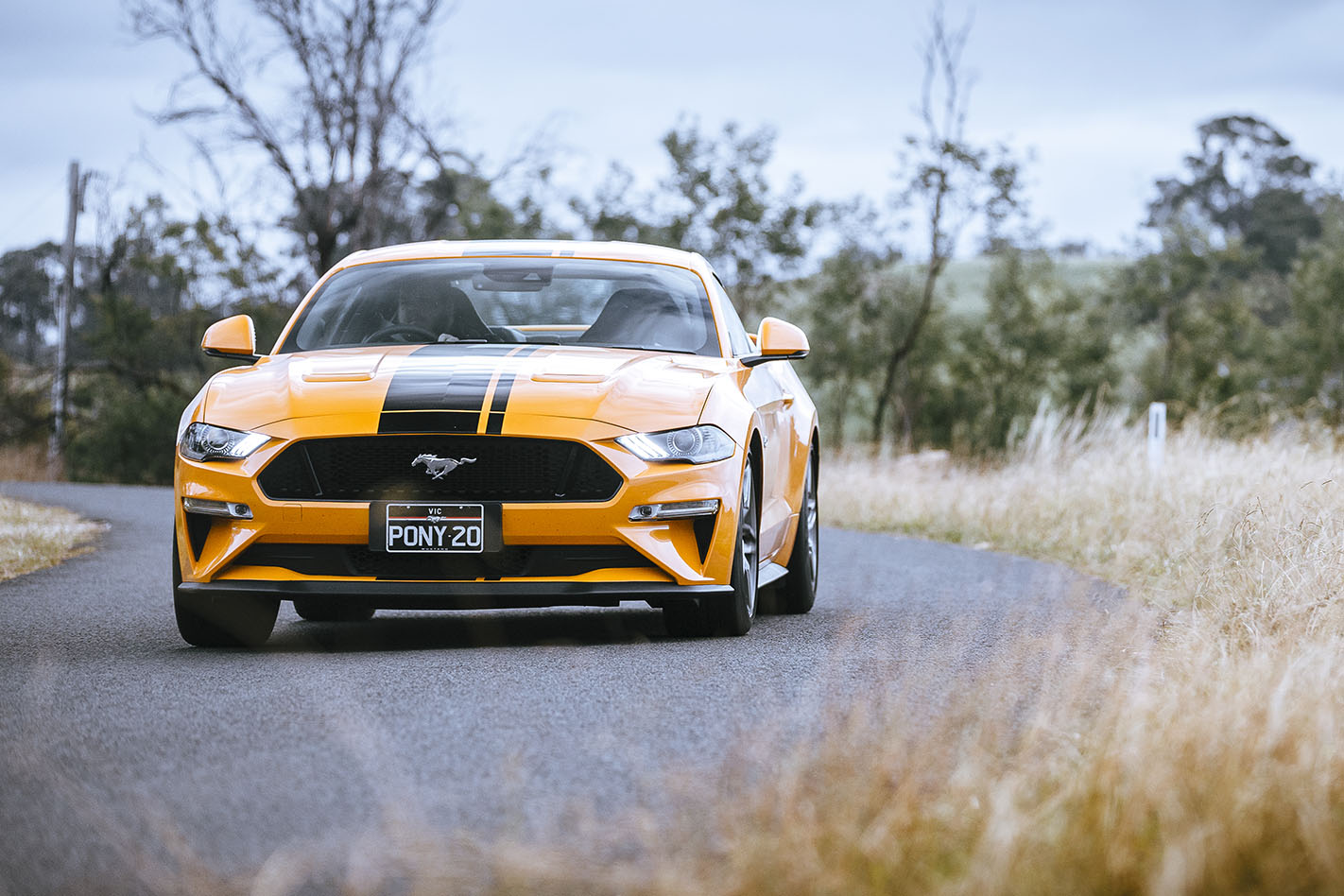
Its three-star ANCAP safety standard, though, simply isn’t good enough. It doesn’t matter whether people are meant to ride in the rear or not; the testing regime revealed more weaknesses than just rear seat occupancy, and Ford needs to address this thoroughly for future editions of the car.



